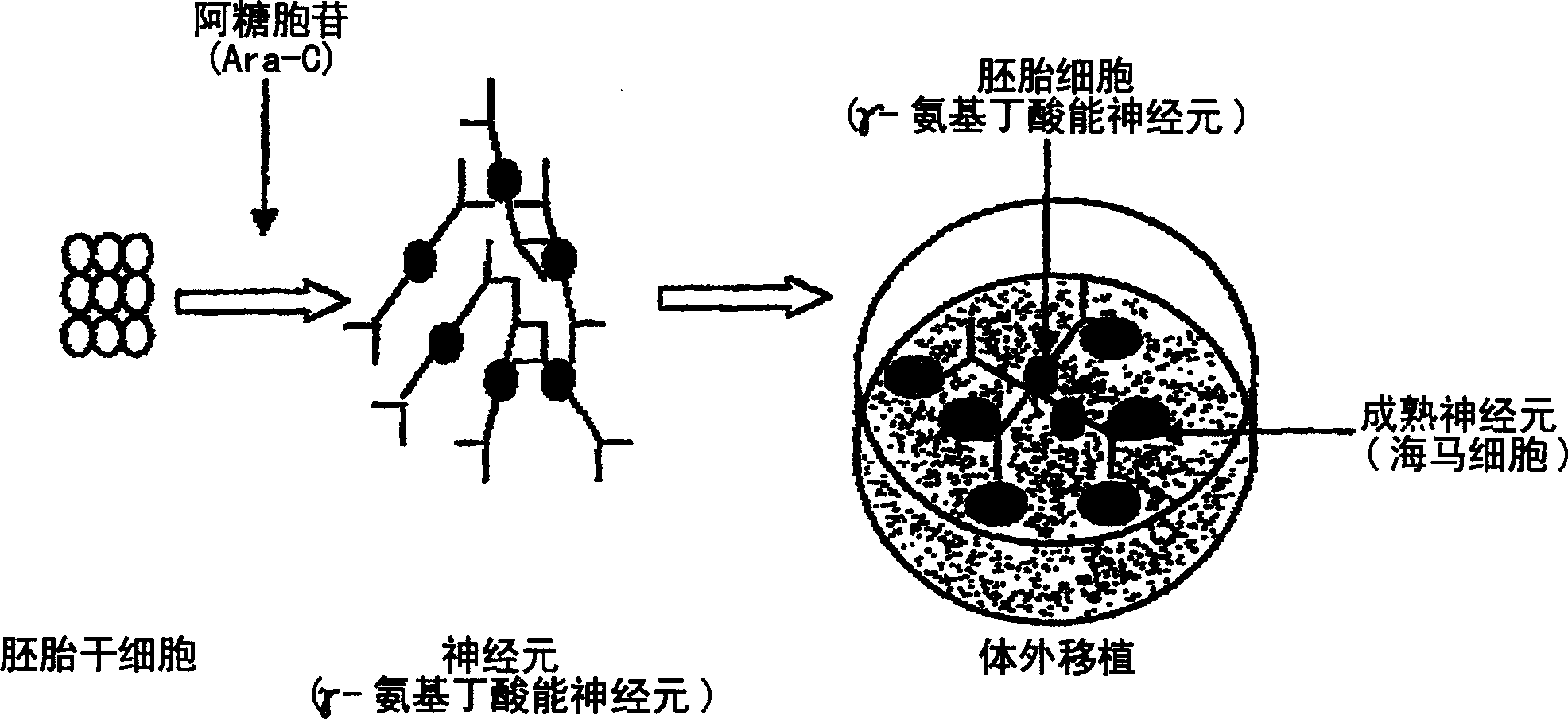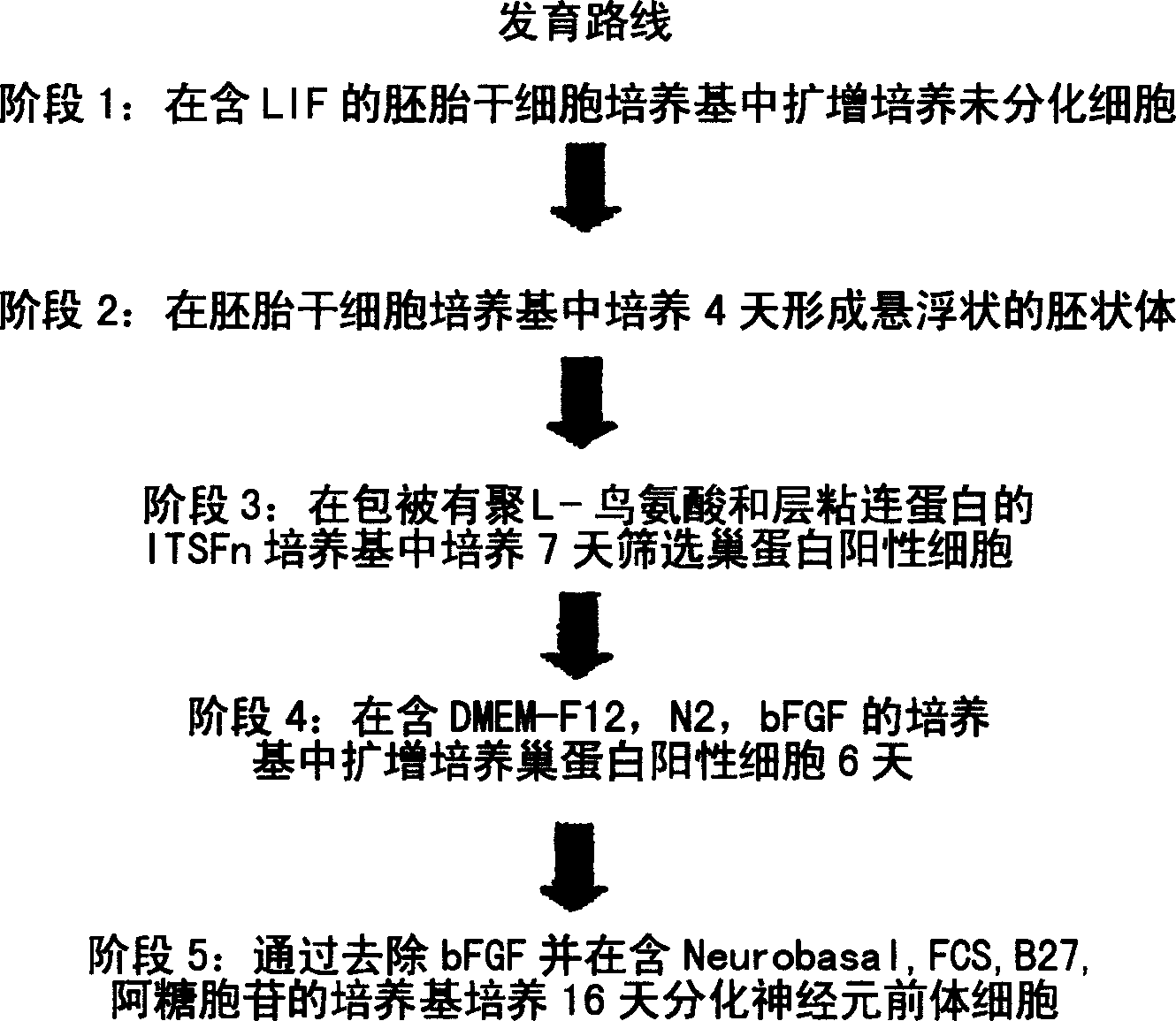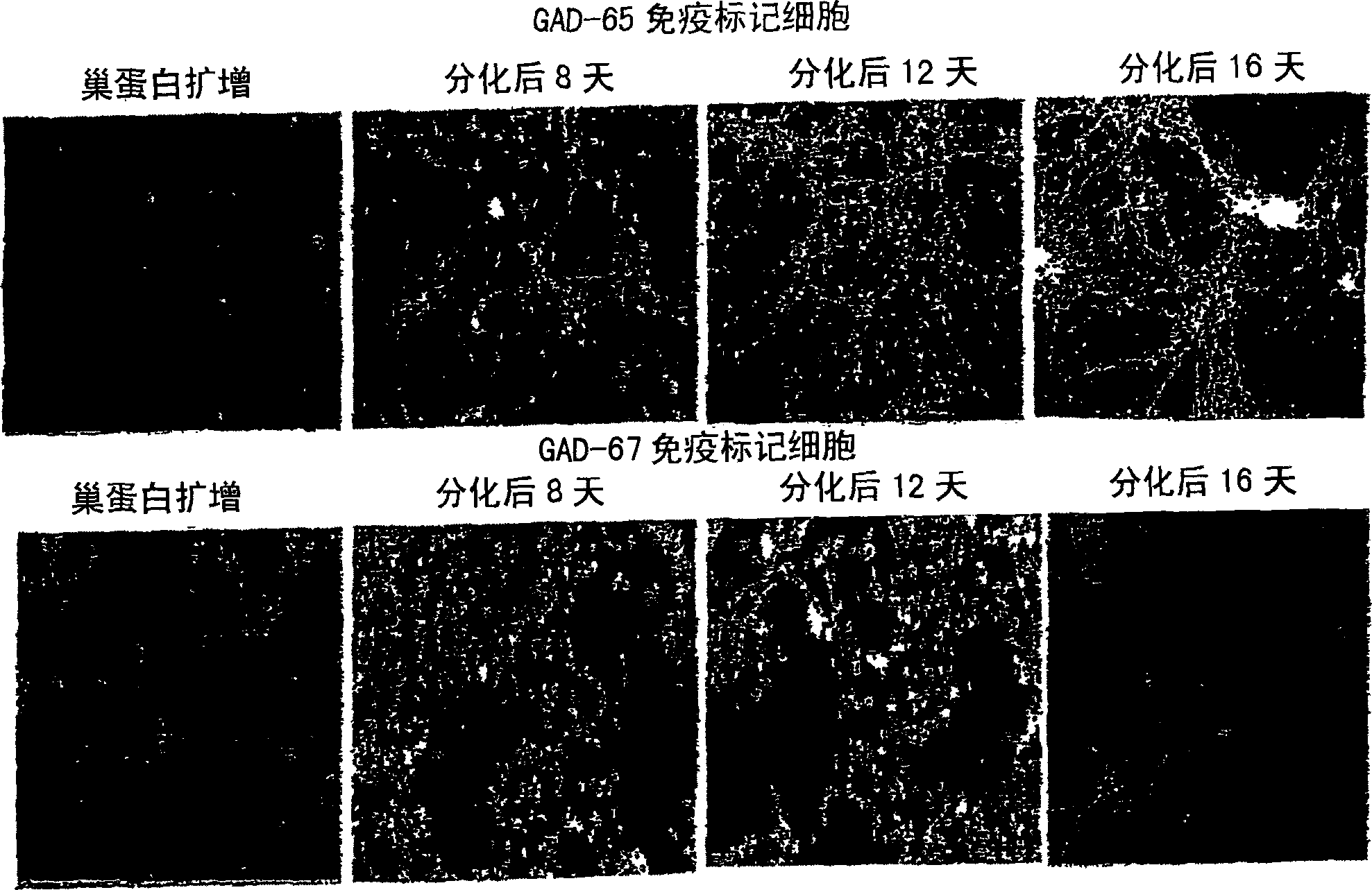In vitro generation of gabaergic neurons from embryonic stem cells and their use in the treatment of neurological disorders
A technology of embryonic stem cells and neurons, applied in animal cells, nervous system cells, vertebrate cells, etc., can solve the problem of not being able to produce high-yield GABA neurons
- Summary
- Abstract
- Description
- Claims
- Application Information
AI Technical Summary
Problems solved by technology
Method used
Image
Examples
preparation example Construction
[0077] Preparation of neuroblasts
[0078] Isolated pluripotent stem cells can be expanded and then transferred to culture conditions that differentiate into neuroblasts. Pluripotent stem cells were cultured according to the differentiation protocol described here to enter the neural cell differentiation pathway. Pluripotent stem cells are cultured on a suitable substrate in a differentiation nutrient medium containing differentiating agents such as soluble factors and growth factors. Suitable substrates include, but are not limited to, solid surfaces coated with positive charges, such as poly-L-lysine or polyornithine, substrates coated with extracellular matrix components, such as fibronectin, laminin, platelet-derived Growth factor (PDGF), epidermal growth factor (EGF), collagen V, human amnion or recombinant cell basement membrane (Matrigel ), or a combination of them. A preferred differentiation nutrient medium is capable of maintaining the proliferation, differentia...
example 1
[0122] The following example demonstrates the in vitro production of functional GABAergic neurons from mouse embryonic stem cells. figure 1 produced GABAergic neurons from murine ES cells, while figure 2 are different steps in differentiating murine ES cells into terminally differentiated neurons.
[0123] 1) Culture and expansion of mouse embryonic stem cells:
[0124] The mouse ES cells used in this experiment were isolated from the inner cell mass of mouse blastocysts, and the techniques used are well known to those skilled in the art. Murine ES cells were of J-1 origin (obtained from National Institute of Dental and Craniofacial Research, National Institute of Health, Bathesda, Maryland, USA) and passaged for 14 passages. These cells were cultured on mitomycin-C treated mouse embryonic fibroblast feeder cells, which arrests mitosis in ES cell culture medium. Murine ES cells are cultured in ES cell culture medium to expand the number of undifferentiated cells. ES cells...
example 2
[0152] In the following example, the present applicants used an in vitro transplantation model to study the potency, viability and function of GABAergic neurons derived from murine embryonic stem cells. figure 1 It is an in vitro transplantation model.
[0153] The survival and function of GABAergic neurons derived from murine ES cells were studied by ex vivo transplantation of GABAergic neurons and hippocampal cells of adult rats. Hippocampal cells were first isolated from isolated cells of adult mouse brain hippocampus, and then dispersed with 0.05% trypsin-EDTA, followed by Neurobasal supplemented with B27 (20 μg / ml) and N2 (10 μg / ml). Cells were cultured on -A medium for 1 week. Adult hippocampal brain cells were cultured on 100 mm tissue culture plates coated with poly-L-ornithine and laminin or gelatin. After 1 week, GABAergic neurons derived from murine ES cells and harvested after 12 days of differentiation were added to adult hippocampal brain cells, and the two cel...
PUM
 Login to View More
Login to View More Abstract
Description
Claims
Application Information
 Login to View More
Login to View More - R&D
- Intellectual Property
- Life Sciences
- Materials
- Tech Scout
- Unparalleled Data Quality
- Higher Quality Content
- 60% Fewer Hallucinations
Browse by: Latest US Patents, China's latest patents, Technical Efficacy Thesaurus, Application Domain, Technology Topic, Popular Technical Reports.
© 2025 PatSnap. All rights reserved.Legal|Privacy policy|Modern Slavery Act Transparency Statement|Sitemap|About US| Contact US: help@patsnap.com



